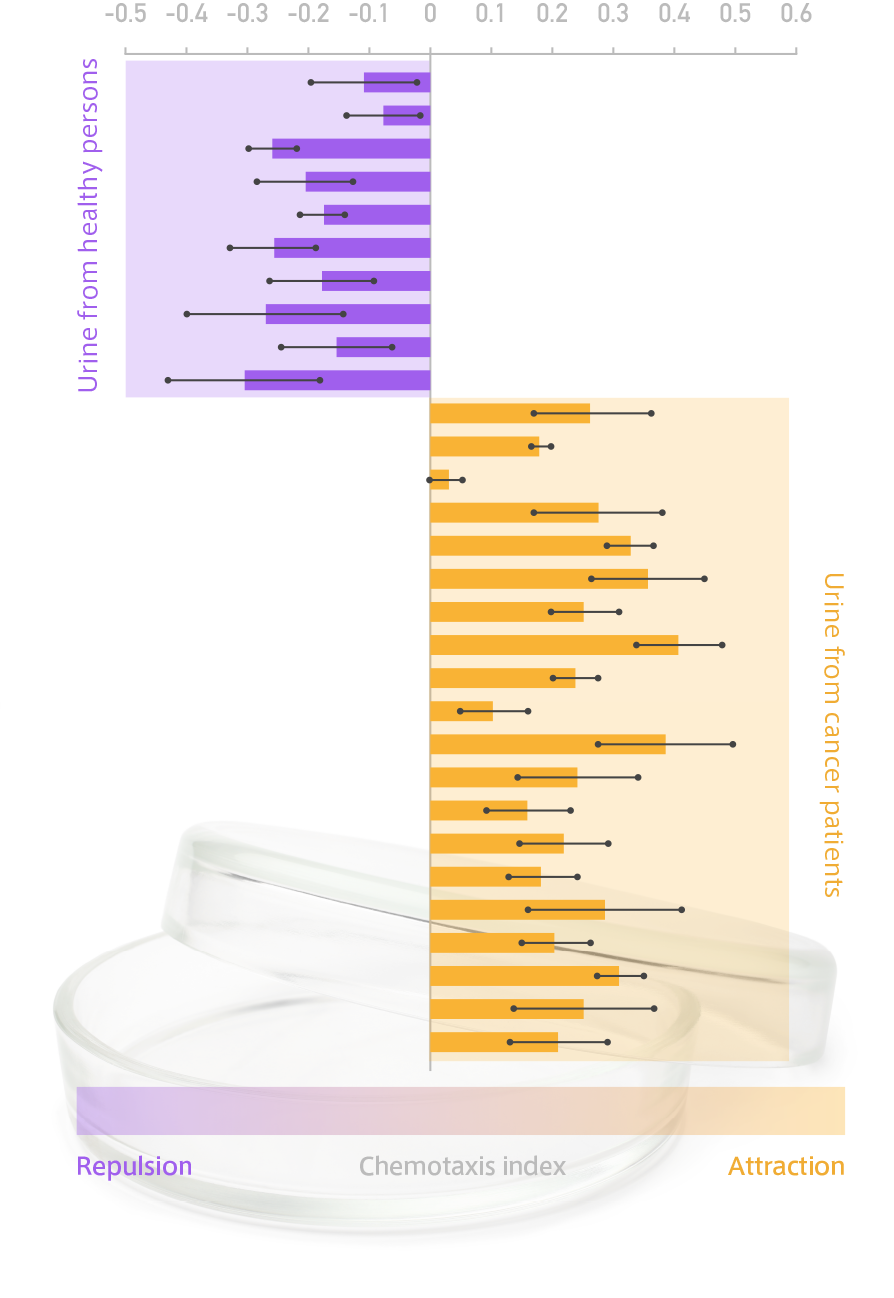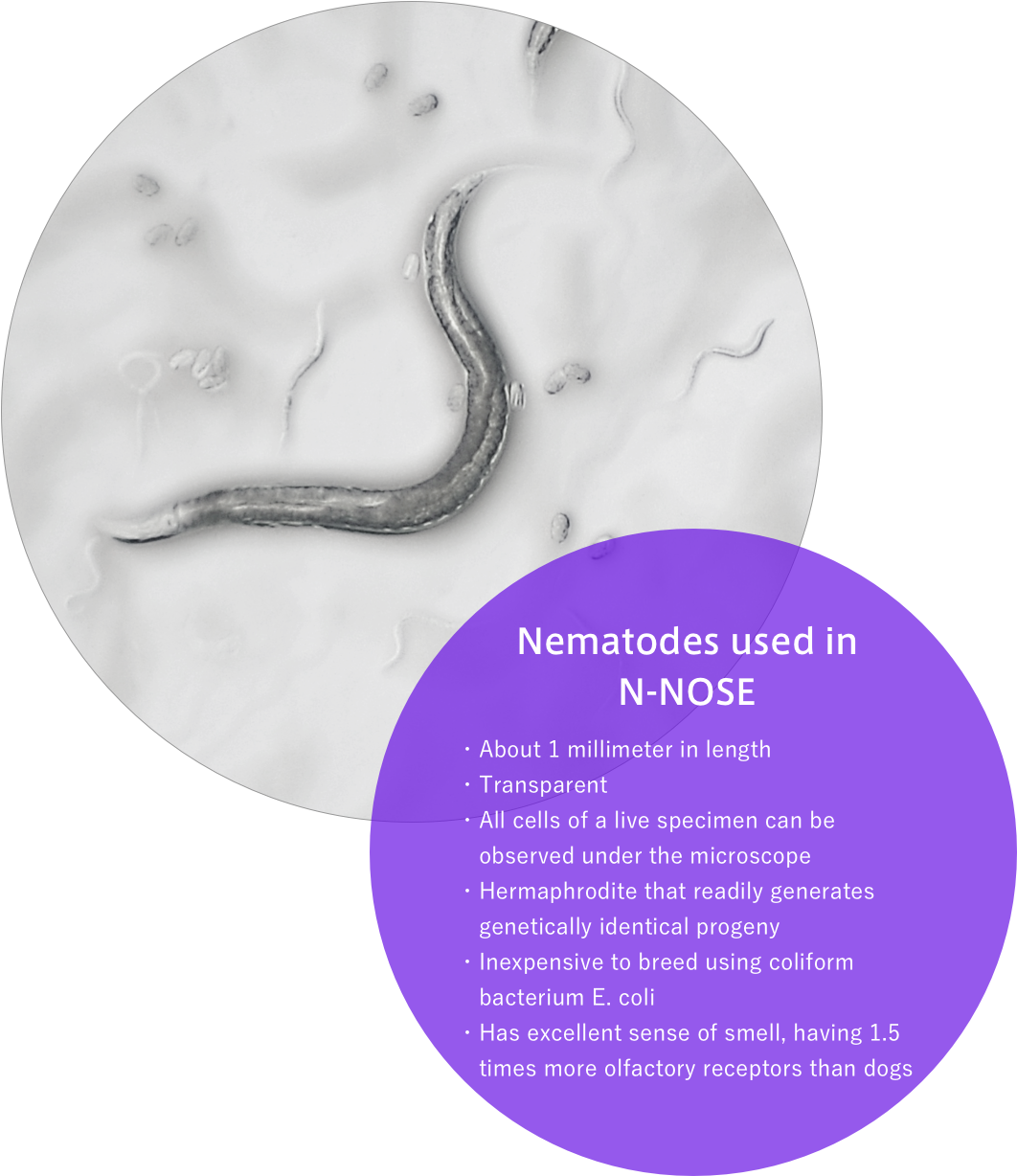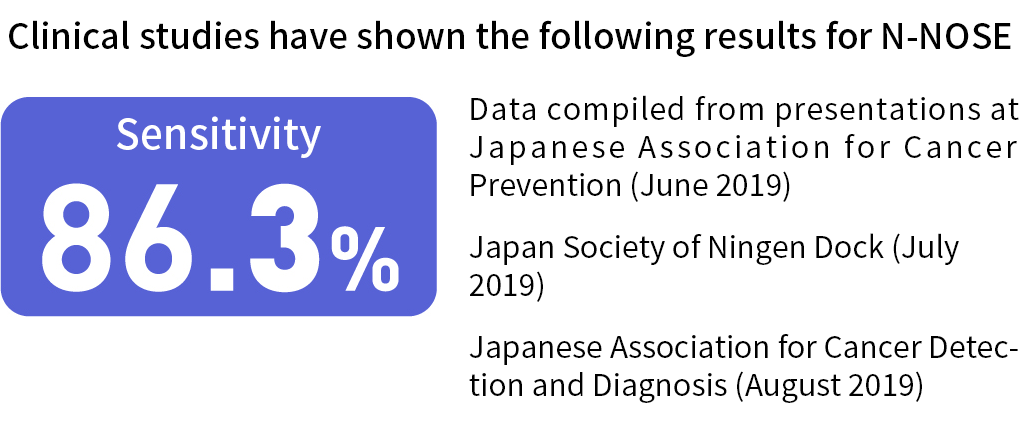Nematodes identify the odor of cancer with great accuracy
The initial cancer screening test N-NOSE uses the chemotaxis characteristic of nematodes (C. elegans), i.e., attractive responses to an odor it likes and repulsive responses to an odor it does not like, as an indicator and is an entirely new and completely novel cancer test that.
Takaaki Hirotsu, a biologist and currently the CEO of Hirotsu Bio Science, has been engaged in nematode olfactory research and discovered that nematodes can detect the odor of cancer in human urine under certain conditions and highly precisely “sniff out” cancer.
“N-NOSE” stands for “nematode nose.”
The results shown in Figure 1 were obtained from basic studies of N-NOSE and show that with high probability nematodes are drawn to the urine of cancer patients but avoid that of healthy persons.

(Quote from T.Hirotsu et al.. PLOS ONE 2015)

